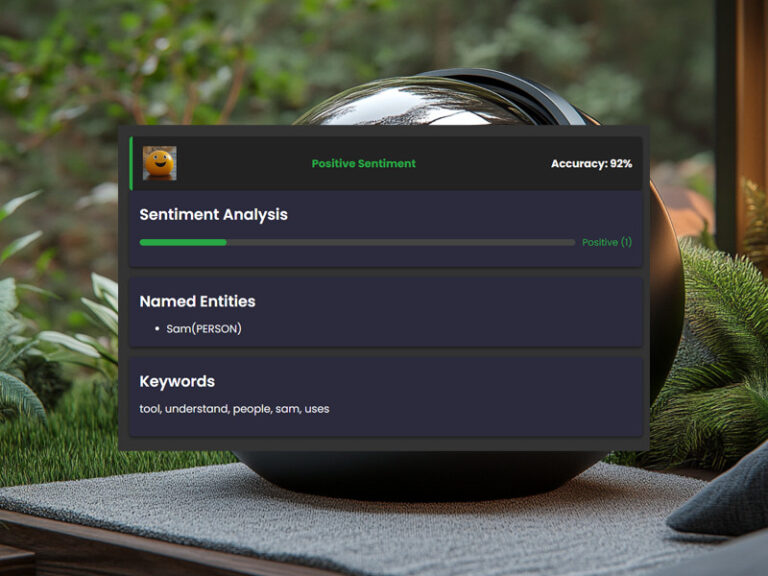o3-mini and DeepSeek’s Surprising DNA Match
How did an 80% similarity birthed a more efficient AI After all? We can all agree that the AI Era is evolving at a breakneck speed.
OpenAI just released a new model called o3-mini – think of it as a smaller, faster version of their previous AI models.
What makes it special?
Well, it’s like having a super-smart assistant that’s really good at math, science, and coding, but doesn’t cost as much to use.
The best part?
For the first time ever, even people who use the free version of ChatGPT can try it out!
You just need to click the ‘Reason’ button when you’re writing a message and you’d see something very familiar and sometimes too familiar to the DeepSeek Model that’s out there.
If you’re already paying for ChatGPT Plus or Team, you get to use it even more but we will get it to all the cool details later. And if you’re wondering how good it is, it’s actually performing better than some older models while being 93% cheaper to run.
Pretty neat, right? It’s like they found a way to make a sports car that’s as fast as a Bugatti but uses way less fuel than a Honda.
How does it stack up against open-source alternatives like DeepSeek R1, Qwen, and PHI-4?
The o3-mini model is a lightweight yet highly capable AI designed to optimize reasoning tasks, coding efficiency, and structured outputs.
This is the latest addition to its reasoning model series, now available in both ChatGPT and via API access.
This model is designed to deliver exceptional performance in STEM fields, particularly in science, math, and coding while maintaining low cost and reduced latency.
If you look close you might notice there are some similarities between the o3-mini model and the open source DeepSeek R1 model, especially since many modern language models share common underlying transformer architectures
| Characteristic | O3-mini | DeepSeek R1 |
|---|---|---|
| Architecture & Optimizations | Built with specific optimizations for inference speed and resource efficiency; Proprietary development pipeline | Community-driven innovations; Standard transformer architecture; Lacks proprietary optimizations |
| Training Data & Fine-Tuning | Vast, carefully curated dataset; Rigorous fine-tuning to minimize hallucinations | Publicly available datasets; Variable fine-tuning based on community contributions |
| Performance & Use-Case | Optimized for low latency and efficient deployment; Speed-critical applications | Focuses on flexibility and modification; Developer-friendly customization |
| Ecosystem & Support | Controlled release cycle; Dedicated support and documentation | Open source community support; Rapid iterations but less centralized quality control |
| Transparency & Customization | Limited transparency due to proprietary nature; Shared release notes | Full codebase transparency; Highly customizable with open training procedures |
It’s worth noting that while both models leverage similar underlying technologies, the o3-mini is typically more optimized for specific use cases like quick inference and controlled outputs, whereas DeepSeek R1 offers the flexibility and transparency that come with open source projects.
Key Features of o3-mini
✅ Enhanced Reasoning – Outperforms previous models in science, math, and coding.
✅ Developer-Friendly – Supports function calling, structured outputs, and developer messages.
✅ Customizable Thinking Effort – Can adjust between low, medium, and high reasoning effort.
✅ Broader Accessibility – Available to free users, with enhanced features for ChatGPT Plus, Team, and Pro users.
✅ Premium Version: o3-mini-high – Offers even higher accuracy, particularly in coding tasks.

AI enthusiasts and developers are eager to understand how o3-mini competes against open-source models like DeepSeek R1, Qwen, and PHI-4. Here’s a direct comparison based on performance, cost, efficiency, and use-case adaptability.
Model Architecture & Optimization
- o3-mini:
- Compact, optimized for speed and low latency.
- Proprietary fine-tuning for accuracy and safety.
- DeepSeek R1:
- Open-source, flexible for custom modifications.
- Lacks proprietary performance optimizations.
- Qwen & PHI-4:
- Larger models, offering deeper contextual understanding.
- Require higher computational power.

Performance in Coding & Function Calls
Benchmark Results (LiveBench Coding Accuracy & Function Calls):
| Model | Function Calling Accuracy | Coding Accuracy (LiveBench) |
|---|---|---|
| o3-mini (high) | 95.2% | 79.2% |
| DeepSeek R1 | ~85-90% (est.) | ~72-75% (est.) |
| Qwen | ~88% (est.) | ~76% (est.) |
| PHI-4 | ~92% (est.) | ~78% (est.) |
🔹 o3-mini outperforms DeepSeek R1 in function calling accuracy and coding efficiency, making it ideal for software development and automation.
Structured Output & Reasoning Performance
| Model | Structured Output Accuracy | Reasoning Power |
|---|---|---|
| o3-mini (high) | 89.8% | Strong in STEM |
| DeepSeek R1 | ~86-88% | Moderate |
| Qwen | ~90% | Strong |
| PHI-4 | ~91% | Strong |
🔹 o3-mini’s structured output accuracy is slightly lower than larger models but offers better speed and efficiency.
Cost vs. Performance Efficiency
One of o3-mini’s biggest advantages is its cost-to-performance ratio. It provides competitive reasoning power at significantly lower costs than Claude, Gemini, and GPT-4 models.
💡 Ideal for startups and businesses that need AI-driven automation without massive computing expenses.
How access levels varies.
- Free Users: You can try o3-mini with certain limitations.
- ChatGPT Plus and Team Users: Receive higher rate limits, with access to up to 150 daily messages.
Pro Users: Enjoy unlimited access to o3-mini. Sweet!
Ultra Pro Max Users can have o3-mini-high. 😂 This premium version is available for paid users, offering even higher-quality responses, especially in coding tasks.
Here is a performance comparison Analysis

General Observation Against Competitor Models
While I couldn’t find a single unified benchmark report that directly compares the 03-mini model with Qwen, PhI-4, DeepSeek R1, Claude, and Gemini across every metric yet, here are some general observations and points based on available information from community benchmarks.
Here’s a methodical comparison table of the different AI models and their characteristics:
| Characteristic | O3-mini | Claude & Gemini | Qwen & Phi-4 | DeepSeek R1 |
|---|---|---|---|---|
| Model Scale & Architecture | Lightweight, compact architecture with focus on efficiency | Large parameter counts (100M-billions), optimized for nuanced tasks | Large parameter counts, broad language capabilities | Similar transformer traits to O3-mini, less proprietary optimization |
| Latency & Efficiency | Highly optimized for low latency and cost-efficiency | Higher computational demands, longer response times | Variable performance based on deployment, generally less efficient than O3-mini | Not specified directly |
| Benchmark Performance | Efficient but may lag in deep reasoning | Strong performance on comprehensive benchmarks (MMLU) | Competitive but variable depending on task | Comparable to O3-mini with task-specific variability |
| Safety & Fine-Tuning | Balanced fine-tuning for responsiveness and accuracy | Extensive safety mechanisms, slower response times | Variable safety features, depends on implementation | Community-driven safety features, variable results |
| Similarity to O3-mini | Baseline | 40-50% similar | 50-60% similar | 60-70% similar |
These figures remain approximations without a standardized, head-to-head benchmarking report that includes all these models under identical conditions.
What are the main differences between earlier models like GPT‑1 and GPT‑3?
Here are some key differences between the o1 model and the new o3-mini model. These points capture the primary distinctions between the two models, as reported in the release notes and developer discussions.
| Characteristic | O1 Model | O3-mini Model |
|---|---|---|
| Architecture & Size | Larger parameter count; Earlier architecture; Less optimization | Smaller, compact architecture; Optimized for efficiency; Fast inference |
| Training & Fine-Tuning | Earlier datasets; Standard fine-tuning approaches | Recent data curation; Refined techniques; Better context handling; Fewer hallucinations |
| Performance & Speed | Slower response times; Higher computational demands | Lower latency; More cost-effective; Agile performance |
| Resource Efficiency | Higher computational resources needed; More memory usage | Streamlined resource use; Better for limited hardware; Efficient scaling |
| Use-Case Focus | Broad, general-purpose applications; No specific optimizations | Quick response scenarios; Efficient performance; Quality maintained |
| Cost Implications | Higher costs due to size and slower speeds | Better cost-performance balance; Real-time application friendly |
Who can benefit the most from o3-mini?
🚀 AI Prompt Engineers – Faster reasoning and structured outputs for complex workflows.
📈 Digital Marketing & Copywriters – Cost-effective AI for content creation and automation.
🖥 Web Design & Ad Agencies – AI-powered function calling for automation and chatbot development.
👨💻 Developers & AI Enthusiasts – Low-latency AI for real-time applications.
🔹 Best Use Cases
✅ Coding & Debugging – Competitive Elo rating (2073) in programming tasks.
✅ Scientific & Mathematical Computation – Enhanced reasoning for STEM fields.
✅ Business & Content Automation – Lower cost AI for marketing and copywriting tasks.
What’s Next for o3-mini?
🔮 Will OpenAI further optimize o3-mini for advanced contextual tasks?
OpenAI has a history of iteratively enhancing its models, and the o3-mini is no exception.
The current version already offers adjustable reasoning effort levels low, medium, and high to cater to various needs.
While specific future optimizations haven’t been publicly detailed yet, it’s reasonable to anticipate that OpenAI will continue refining o3-mini’s capabilities to handle increasingly complex contextual scenarios.
🔮 How will it compete with next-gen models from DeepSeek, Claude, Qwen, and Gemini?
The o3-mini has been designed to deliver robust performance.
In coding tasks, o3-mini has demonstrated superior performance compared to some of the other models available right now.
Its cost-effectiveness and speed also make it an attractive choice for users seeking efficient AI solutions.
🔮 Can o3-mini replace larger AI models for cost-conscious businesses?
The o3-mini is a viable alternative for cost-conscious businesses.
Its optimized architecture ensures faster response times and reduced computational resource requirements, leading to lower operational costs.
While it may not match the full capabilities of larger models in every aspect, o3-mini’s proficiency in technical stuff and its reasoning levels make it suitable for a wide range of applications.
For businesses prioritizing cost-efficiency without a significant compromise on performance, o3-mini presents a practical solution.
Final Thoughts – The democratization of AI technology
While the o3-mini provides an impressive balance between efficiency and power, the open-source community continues to push for greater transparency and accessibility.
The 03-mini models’ unmatched efficiency, cost-effectiveness, and high-speed reasoning, the o3-mini disrupts the AI industry.
With its 93% cost reduction compared to o1 and competitive performance metrics, particularly in coding tasks where it achieves a 2073 Elo score, o3-mini represents a sweet spot between efficiency and capability.
In case you are wondering what is the Elo Score? It’s a number that shows how good a player is at games like chess based on their game results against other players.
The new models’ architectural similarities with DeepSeek R1 (60-70% similar) and strategic differences from larger models like Claude and Gemini suggest a growing trend toward optimized, resource-efficient AI solutions.
Whether you’re an AI engineer, developer, or content creator, this compact powerhouse proves that small models can make a big impact.
The democratization of AI technology, its optimized architecture, and refined fine-tuning techniques point to a future where high-performance AI doesn’t necessarily require massive computational resources or premium subscriptions.
As the AI industry continues to evolve, o3-mini shows that the path forward may not always involve building bigger models but somewhat smarter, more efficient ones that can deliver comparable results at a fraction of the cost.









